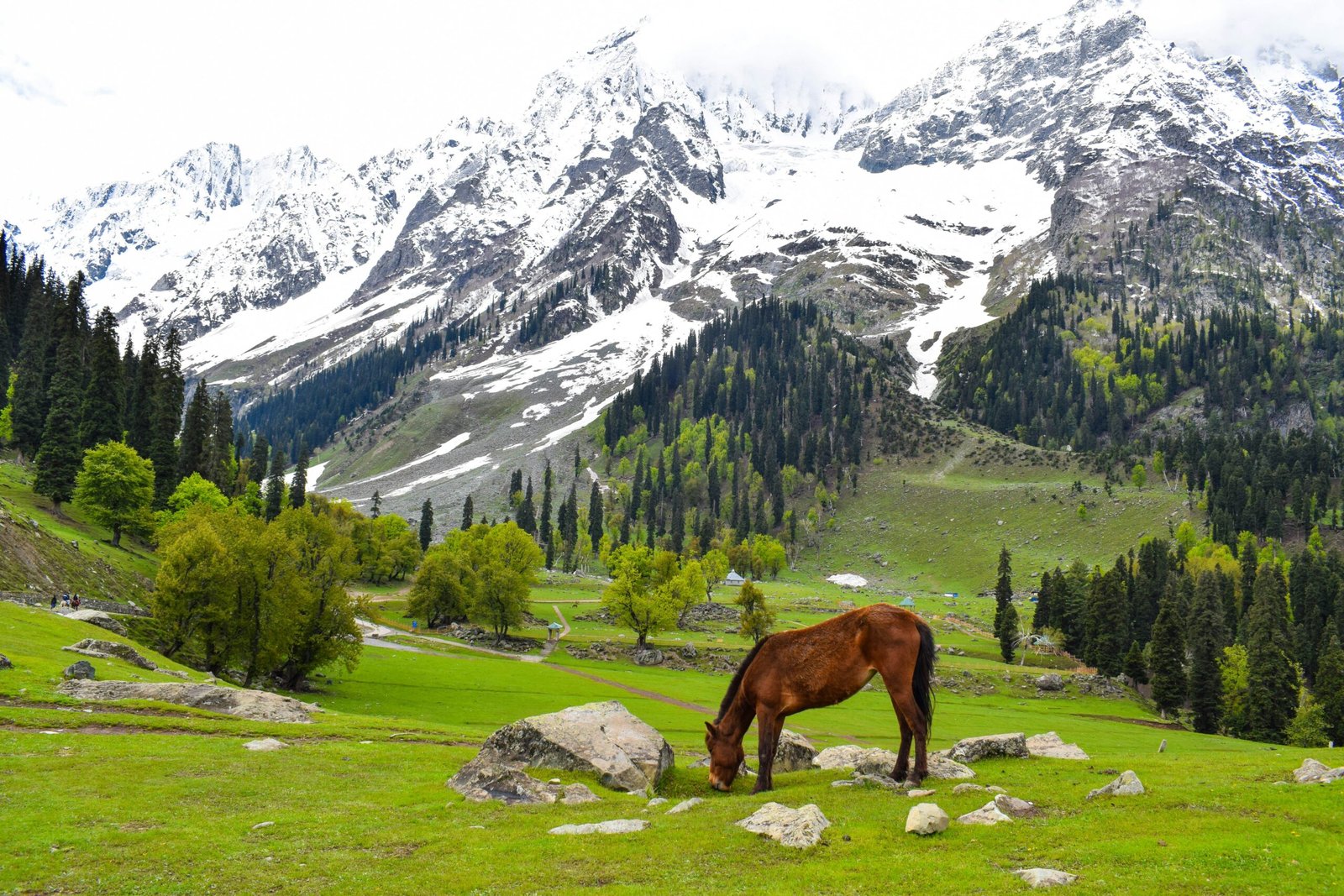Exploring the Chicham Bridge: The World's Highest Suspension Bridge
Introduction to Chicham Bridge
The Chicham Bridge, a marvel of modern engineering, stands as the world’s highest suspension bridge. Located in the Spiti Valley of Himachal Pradesh, India, this architectural feat is situated at an altitude of approximately 13,596 feet above sea level. The Spiti Valley, known for its rugged terrain and picturesque landscapes, now boasts an impressive infrastructure that significantly improves connectivity for its local inhabitants.
Constructed to facilitate better access between the remote villages of Chicham and Kibber, the bridge plays a crucial role in enhancing the daily lives of residents. Before its inception, crossing the deep gorge that separates these villages was a hazardous endeavor, often requiring hours of perilous trekking. The Chicham Bridge, however, has transformed this journey into a matter of minutes, ensuring safety and convenience for everyone who traverses it.
The bridge’s construction was no small feat. It required meticulous planning and execution, given the challenging topography and extreme weather conditions of the Spiti Valley. Engineers and laborers worked tirelessly, often braving harsh climates to complete this landmark project. The result is a robust suspension bridge that not only stands as a testament to human ingenuity but also as a beacon of progress for the region.
The significance of Chicham Bridge extends beyond its structural magnificence. It symbolizes a pivotal advancement in the region’s infrastructure, fostering economic growth by facilitating trade and tourism. As more visitors flock to witness the world’s highest suspension bridge, the local communities stand to benefit from increased economic activities and improved quality of life.
The History and Construction of Chicham Bridge
The Chicham Bridge, recognized as the world’s highest suspension bridge, stands as a remarkable feat of engineering. This monumental project began in the early 2000s, driven by the need to connect the remote villages of Kibber and Chicham in the Spiti Valley, located in the Indian state of Himachal Pradesh. Prior to the bridge’s construction, residents relied on a precarious ropeway to traverse the 150-meter deep gorge that separated the two villages.
The construction of the Chicham Bridge was no small undertaking. The project spanned over a decade, officially commencing in 2006 and reaching completion in 2017. The engineering challenges were immense, primarily due to the rugged terrain of the Himalayas and the extreme weather conditions that are characteristic of the region. The bridge construction had to be meticulously planned to ensure the safety and durability of the structure.
One of the notable aspects of this project was the collaboration between local engineers and international experts. This partnership was crucial in overcoming the unique challenges posed by the location. The bridge had to withstand heavy snowfall, high-velocity winds, and seismic activities common in the Himalayan region. To address these concerns, advanced engineering techniques were employed. The use of high-tensile steel and state-of-the-art suspension technology ensured that the bridge could endure the harsh environmental conditions.
The Chicham Bridge’s construction required innovative solutions to address the logistical difficulties of transporting materials to such a remote area. Helicopters were used to airlift heavy components, and temporary access roads were built to facilitate ground transportation. Additionally, the workforce had to adapt to working at high altitudes, where oxygen levels are significantly lower, posing a health risk.
Despite these challenges, the dedication and expertise of the engineers and workers involved culminated in the successful completion of the Chicham Bridge. Today, the bridge not only serves as a crucial link for the local communities but also stands as a testament to human ingenuity and perseverance in the face of formidable natural obstacles.
Engineering Marvel: Design and Structure
The Chicham Bridge stands as a testament to modern engineering, showcasing a blend of robust materials and innovative design principles. Constructed primarily from high-strength steel and reinforced concrete, the bridge’s materials were meticulously chosen to ensure durability and resilience under the extreme conditions of its high-altitude location. Steel, known for its tensile strength and flexibility, forms the main cables and support structures, while concrete, celebrated for its compressive strength, is used for the deck and anchorage points.
The suspension bridge design of the Chicham Bridge is a key factor in its ability to distribute weight effectively. The main cables, suspended between towers, bear the majority of the load, transferring it to the anchorages at either end. This design not only allows the bridge to span significant distances but also provides the necessary flexibility to withstand dynamic forces such as wind, seismic activity, and temperature variations. The suspended deck, supported by vertical suspenders, ensures that the weight is evenly distributed, minimizing stress on any single component.
At an altitude of over 4,000 meters, the Chicham Bridge’s engineering had to address unique challenges. The high altitude means lower oxygen levels and colder temperatures, both of which can affect materials and construction techniques. Innovative solutions, such as special coating to prevent steel corrosion and the use of expansion joints to accommodate temperature fluctuations, were essential in ensuring the bridge’s longevity and stability.
Comparing the Chicham Bridge to other notable suspension bridges, such as the Golden Gate Bridge in San Francisco or the Akashi Kaikyō Bridge in Japan, highlights its unique position. While these bridges are engineering marvels in their own right, the Chicham Bridge’s combination of height and environmental challenges sets it apart. Its successful completion not only showcases advanced engineering capabilities but also serves as an inspiration for future high-altitude infrastructure projects around the world.
The Scenic Beauty of Spiti Valley
Nestled in the heart of the Himalayas, the Spiti Valley is a testament to nature’s raw and rugged beauty. This high-altitude desert environment, often referred to as the “Middle Land” between Tibet and India, boasts a landscape that is as unique as it is breathtaking. The valley is characterized by its stark, barren mountains, which rise majestically against a backdrop of clear, azure skies. These imposing peaks, often snow-capped, create a dramatic and awe-inspiring panorama that captivates all who visit.
Adding to the valley’s allure are its serene rivers, which carve their way through the rugged terrain, glistening under the sun’s rays. The Spiti River, with its crystal-clear waters, meanders gracefully through the valley, providing life to the sparse vegetation that dots the landscape. The river’s presence not only enhances the valley’s natural beauty but also offers a sense of tranquility and peace that is hard to find elsewhere.
The Spiti Valley is a haven for adventure travelers and photographers alike. Its challenging terrain and high-altitude conditions make it an ideal destination for trekking, mountain biking, and other outdoor pursuits. The valley’s remote and unspoiled nature provides a perfect backdrop for photography, with every turn revealing a new and stunning vista. Whether capturing the golden hues of the sunrise over the mountains or the intricate patterns of the river’s flow, photographers find endless inspiration in the valley’s diverse and striking scenery.
The Chicham Bridge, spanning a deep gorge, offers an unparalleled vantage point to appreciate the valley’s grandeur. From this highest suspension bridge in the world, one can take in sweeping panoramic views that encompass the valley’s unique landscape in all its glory. The bridge not only serves as a practical crossing but also as a prime spot for soaking in the natural splendor that defines the Spiti Valley. Its strategic location provides an unobstructed view of the surrounding mountains and rivers, making it a must-visit for anyone seeking to fully experience the scenic beauty of this remarkable region.
Cultural and Economic Impact on Local Communities
The Chicham Bridge, standing as the world’s highest suspension bridge, has brought profound cultural and economic changes to the local communities in the Spiti Valley. Enhanced connectivity has played a crucial role in reshaping the daily lives of the inhabitants. With improved access, residents now experience easier and more reliable routes to educational facilities, healthcare services, and essential markets, which were previously hindered by the region’s challenging topography.
Education has seen a significant uplift as students can commute more efficiently to schools and colleges, leading to better attendance and academic performance. Similarly, access to healthcare has dramatically improved, with residents reaching medical facilities faster, thereby reducing the risks associated with delayed medical attention. The Chicham Bridge has thus become a lifeline, ensuring that crucial services are within reach, contributing to the overall well-being of the community.
On the economic front, the Chicham Bridge has catalyzed a surge in tourism. The bridge itself, an architectural marvel, attracts tourists from around the globe, eager to experience its breathtaking views and the surrounding natural beauty. This influx of visitors has provided a significant boost to local businesses, particularly in hospitality and retail. Hotels, guesthouses, restaurants, and shops have flourished, creating employment opportunities and promoting local crafts and products.
Infrastructure development has also gained momentum, with better roads and enhanced transportation facilities complementing the bridge’s connectivity. Local markets have expanded, enabling farmers and artisans to sell their products more widely and efficiently. This economic dynamism has brought about an improved standard of living and greater financial stability for the residents.
In essence, the Chicham Bridge has not only connected two points across a gorge but has also bridged gaps in cultural and economic development, fostering a more integrated and prosperous community in the Spiti Valley.
Visitor Experience: What to Expect
Planning a visit to the Chicham Bridge, the world’s highest suspension bridge, offers an exhilarating adventure amidst the majestic landscape of the Spiti Valley in Himachal Pradesh. To make the most of your trip, consider the following practical information and tips.
Best Time to Visit
The optimal time to visit Chicham Bridge is between May and October. During these months, the weather is relatively mild, and the roads are more accessible. However, be prepared for sudden weather changes and cooler temperatures, especially at night. Winter months can be harsh, with heavy snowfall making travel challenging.
How to Get There
Reaching Chicham Bridge requires a bit of planning. The nearest major town is Kaza, which is around 15 kilometers away. Kaza is well-connected by road to Manali and Shimla, two key transit points. From Kaza, you can hire a taxi or drive yourself to Chicham Bridge. The drive offers breathtaking views but requires careful navigation due to the rugged terrain.
Acclimatizing to High Altitude
Given its altitude of over 4,000 meters, acclimatization is crucial. Spend a couple of days in Kaza or other lower-altitude areas before heading to the bridge. Hydrate well, avoid strenuous activities initially, and consider consulting a physician for medications to prevent altitude sickness.
Nearby Attractions and Activities
While visiting Chicham Bridge, explore nearby attractions. The Spiti Valley offers excellent trekking routes like the Pin Parvati Pass and Parang La. Cultural enthusiasts can attend local festivals such as the Ladarcha Fair in July or the Spiti Losar Festival. Visit the ancient Key Monastery or the Tabo Monastery, known for its stunning murals and history dating back to 996 AD.
Weather, Accommodation, and Dining
Weather in the Spiti Valley can be unpredictable. Pack layers, including thermal wear, waterproof jackets, and sturdy boots. Accommodation options range from guesthouses in Kaza to homestays in nearby villages, offering a chance to experience local hospitality. Dining options are limited but include local dhabas serving traditional Himachali cuisine and basic Indian dishes. Carry some snacks and water for the journey.
With the right preparation, a visit to Chicham Bridge can be a memorable experience, combining natural beauty, adventure, and cultural richness.
Safety and Environmental Considerations
The Chicham Bridge, renowned as the world’s highest suspension bridge, is a marvel of engineering and safety. During its construction, rigorous safety measures were implemented to ensure the security of both the workers and the structure itself. State-of-the-art technology and materials were employed to withstand the harsh climatic conditions of the region, ensuring durability and stability. The construction team adhered to stringent safety protocols, including regular inspections and stress testing, to mitigate any risks associated with high-altitude construction.
Presently, the Chicham Bridge undergoes systematic maintenance and inspection routines. These include bi-annual assessments by structural engineers who evaluate the integrity of the bridge and address any potential issues. Routine maintenance activities, such as checking the tension of the suspension cables and inspecting the bridge deck for any signs of wear and tear, are crucial for ensuring the continued safety of visitors. Additionally, advanced monitoring systems have been installed to provide real-time data on the bridge’s structural health, allowing for prompt intervention if necessary.
Environmental considerations were also a significant focus during the planning and construction phases of the Chicham Bridge. Efforts were made to minimize the ecological footprint of the project. Construction practices were designed to reduce soil erosion and protect local wildlife habitats. Ongoing use of the bridge is managed with an eye toward sustainability; measures such as limiting vehicle weight and encouraging pedestrian use help to reduce environmental stress.
Responsible tourism plays a vital role in preserving the natural beauty and cultural heritage surrounding the Chicham Bridge. Visitors are encouraged to adhere to guidelines that promote environmental conservation, such as waste reduction and respect for local customs. Educational programs and signage help to raise awareness about the importance of protecting this unique location, ensuring that the Chicham Bridge remains a safe and beautiful landmark for future generations to enjoy.
Future Prospects and Developments
The Chicham Bridge, renowned as the world’s highest suspension bridge, holds immense potential for future developments that could significantly enhance its utility and visitor experience. As interest in this remarkable structure continues to grow, there are numerous opportunities to further integrate the bridge into the broader framework of the Spiti Valley’s tourism and infrastructure.
One of the primary areas of focus is the improvement of accessibility to the Chicham Bridge. Ongoing projects aim to upgrade the surrounding road networks, ensuring safer and more comfortable travel for visitors. Enhancements in transportation infrastructure will not only make the bridge more accessible but also support the local communities by facilitating better connectivity and economic opportunities.
Sustainable tourism is a critical consideration in the future growth of the Spiti Valley. The delicate ecosystem and rich cultural heritage of the region necessitate careful planning and management. Efforts are being made to develop eco-friendly tourism practices that minimize environmental impact while promoting responsible travel. Initiatives such as guided tours, educational programs, and community-based hospitality services are being explored to enrich the visitor experience while preserving the unique character of the area.
Moreover, ongoing and upcoming projects aim to bolster the local economy through sustainable development. Renewable energy sources, such as solar and wind power, are being introduced to reduce reliance on non-renewable resources. These initiatives not only contribute to environmental conservation but also provide long-term benefits to the local population.
The Chicham Bridge stands as a symbol of engineering prowess and cultural significance. As future developments unfold, it is imperative to strike a balance between enhancing infrastructure and preserving the natural and cultural heritage of the Spiti Valley. By prioritizing sustainable tourism and community support, the Chicham Bridge can continue to be a beacon of progress and inspiration for generations to come.





